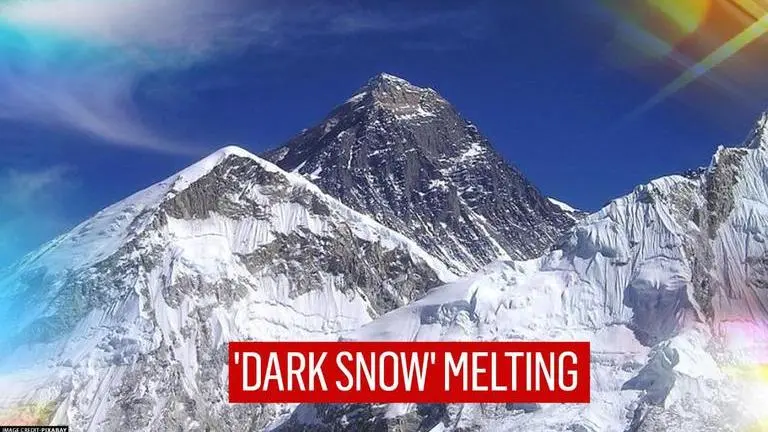Updated 6 October 2020 at 18:08 IST
Dust from Sahara & Thar settling on Himalayas; dark snow absorbing heat & melting: Study
Scientists have found that dust from some of the world's largest deserts is contributing to the rapid melting of the Himalayan snowcaps.
- Science News
- 3 min read

Scientists have found that dust from some of the world's largest deserts is contributing to the rapid melting of the Himalayan snowcaps. A NASA-funded study used satellite images and looked at dust levels in the Himalayas and found that dust from desserts like Sahara, Thar and the plains of Saudi Arabia are reaching the snow caps. After being carried around the world on vast air currents, the dust particles settle on the Asian mountain range and darkens the natural snow, the study revealed.
The dust particles from the deserts that accumulate over the mountain range lead to the phenomenon known as the 'albedo effect' where the darker snow is absorbing more heat and therefore melting the snow caps quicker.
The NASA-funded international team of researchers searched some of the most detailed satellite images ever taken of the Himalayas and recorded levels of minute atmospheric aerosol particles, elevation and the amount of dust present on snow. The space agency revealed the amount of dust being blown onto the snow caps was interfering with the albedo effect.
The physical phenomenon entails light colours reflecting lots of energy from sunlight that prevents warming, whereas dark dust particles do the contrary and soak up more thermal energy and reflect less, thus causing warming. According to the researchers, the desert dust is naturally occurring but its prevalence in the Himalayas has been influenced by human activities.
Advertisement
The researchers said increasing temperatures caused by climate change have altered atmospheric circulation, enhanced the winds that carry dust thousands of miles on aerosol layers. Adding further the researchers said that the increased presence of dust atop mountains is a leading contributor to the unprecedented rate of snow loss in the Himalayas.
Advertisement
Snow in the western Himalayas is receding rapidly
Dr. Chandan Sarangi, Co-lead author of the Indian Institute of Technology Madras, said the snow in the western Himalayas is receding rapidly. People need to understand why this is happening and also need to understand the implications. The study has shown dust can be a big contributor to the accelerated snowmelt, he added.
The scientists predicted that as the climate warms and snow lines move higher, the role of dust is expected to become even more pronounced in the Himalayas. The Himalayan mountain range is wide and home to the world's tallest mountains, including Everest and K2.
The albedo effect at high elevations, above 4,500 metres (14,764ft), is vital to life for millions of people who rely on snowmelt for their drinking water, the researchers said. The darker, dirtier snow melts faster and changes the timing and amount of freshwater created, they added. The study has only assessed only the western Himalayas, however, the researchers believe the findings can be applied to other mountain ranges.
Published By : Brigitte Fernandes
Published On: 6 October 2020 at 18:08 IST
